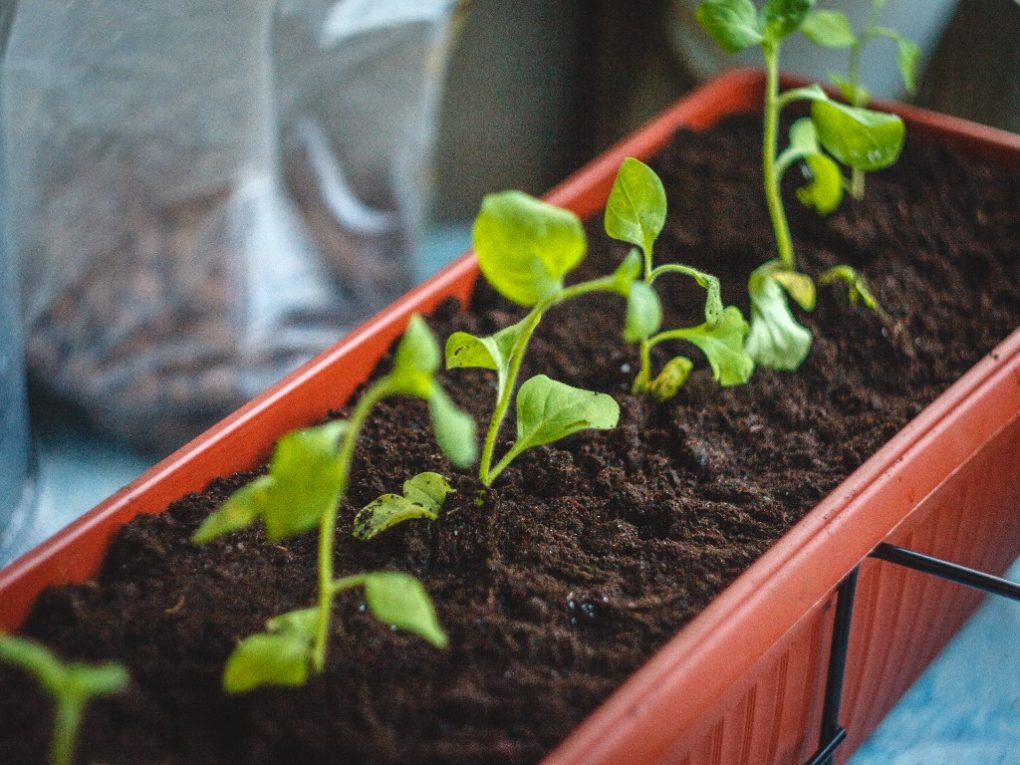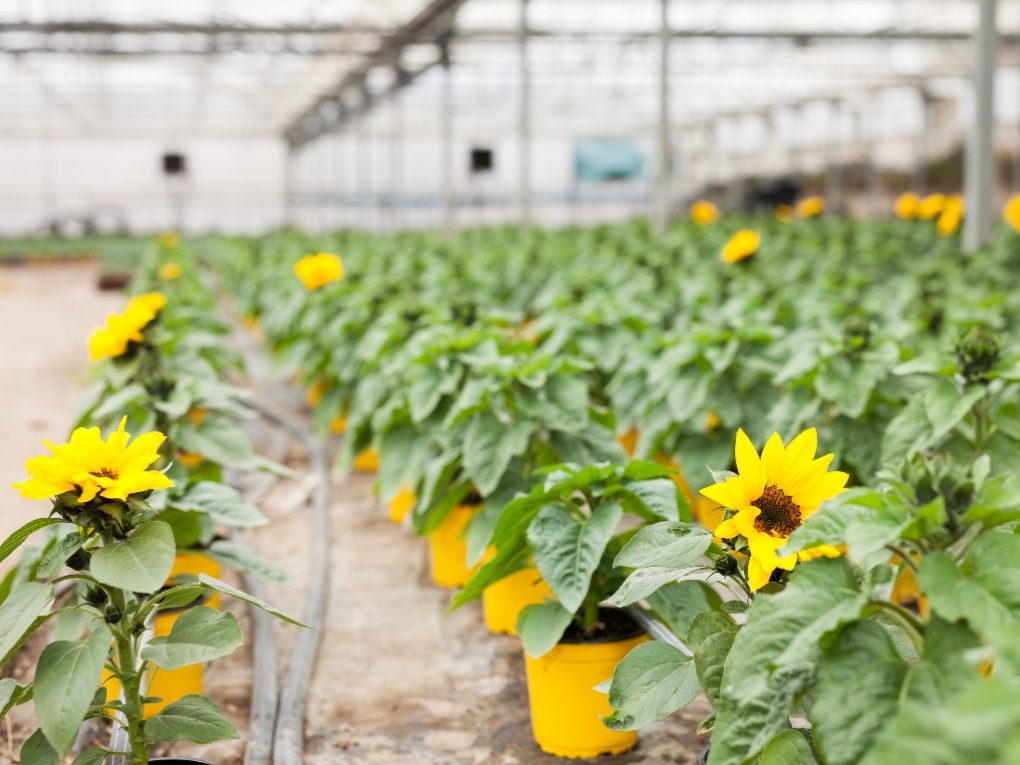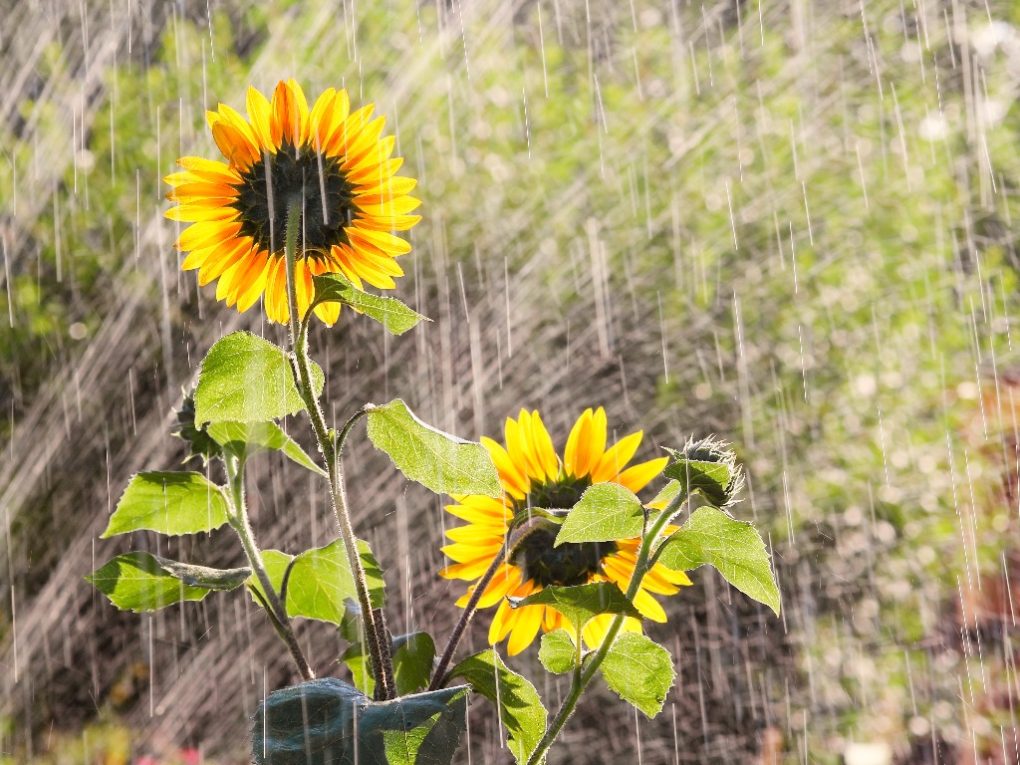Can Sunflowers Be Transplanted: Advantages and Disadvantages of Transplant Sunflowers
Yes, sunflowers can be transplanted, but they are known for having deep taproots, so transplanting can be a bit tricky. It’s best to start with young sunflower seedlings, as older plants may have established roots that can be damaged during transplanting. Here are some tips for transplanting sunflowers:

- Timing: Wait until after the last frost to transplant sunflowers. Transplanting them too early can lead to stunted growth or even death.
- Choose the right container: Select a container deep enough to accommodate the sunflower’s taproot, which can grow several feet long. A biodegradable container is best to avoid damaging the root system when transplanting.
- Prepare the soil: The soil should be well-draining and amended with compost or other organic matter. The hole should be deep enough to accommodate the roots of the sunflower seedling.
- Transplant the seedling: Carefully remove the sunflower seedling from its current container, keeping the root ball intact. Gently place the seedling in the new hole and fill it with soil.
- Water: Water the transplanted sunflower thoroughly and keep the soil consistently moist for the first few weeks until the plant becomes established.
Table of Contents
Advantages of Transplanting Sunflowers
Earlier Blooming
Transplanting sunflowers can result in earlier blooming because the young plants have already had a head start in growth before being transplanted into the ground. Sunflowers grown from seeds directly in the ground may take longer to sprout and establish themselves, which can delay their blooming time.
You can give them a head start by transplanting sunflowers that have already started growing, resulting in earlier and more abundant blooms. This can be especially useful if you live in an area with a shorter growing season or want to enjoy the beauty of the sunflowers earlier in the season.
Controlled Growing Conditions
Transplanting sunflowers can allow for more controlled growing conditions because the young plants can be started indoors or in a greenhouse before being transplanted into the ground. This can give you more control over the amount of water, nutrients, and sunlight the plants receive.
By growing sunflowers in a controlled environment before transplanting them, you can ensure they get the optimal growing conditions needed to thrive. This can be especially helpful if you live in an area with harsh weather conditions, such as extreme heat or cold, or if you want to grow sunflowers in a location that doesn’t receive enough sunlight or has poor soil quality.

Easy Weed Control
Transplanting sunflowers can make weed control easier by removing weeds from around the plants without damaging their roots. However, removing weeds without disturbing the young plants’ fragile roots can be more challenging when sunflowers are grown from seeds directly in the ground.
By transplanting sunflowers, you can place them in a location with fewer weeds or remove any existing weeds before planting them. This can make it easier to keep the area around the sunflowers weed-free, which can help to reduce competition for nutrients, water, and sunlight.
Better Spacing
Transplanting sunflowers can result in better spacing because you can control the distance between plants. When sunflowers are grown from seeds directly in the ground, controlling the spacing between them can be challenging, resulting in overcrowding and stunted growth. By transplanting sunflowers, you can ensure that each plant has enough space to grow, receive adequate sunlight, and access nutrients and water.
According to the University of Minnesota Extension, proper spacing is important for sunflowers because they can grow large. If planted too close together, they can compete for resources and grow smaller than they would otherwise. By transplanting sunflowers with appropriate spacing, you can help ensure they have enough room to grow to their full potential, resulting in larger, more vibrant blooms.
Protection From Pests
Transplanting sunflowers can provide some protection from pests because young sunflower seedlings can be more vulnerable to damage from pests such as birds, rodents, and insects. By transplanting sunflowers, you can place them in a location that is less accessible to pests or protect them with physical barriers, such as bird netting or cages.
Additionally, by transplanting sunflowers, you can monitor them more closely for signs of pest damage and take action to control the pests before they cause significant harm to the plants. This can include using organic pest control methods, such as companion planting, natural predators, and homemade sprays. Protecting your sunflowers from pests can help them grow to their full potential and produce healthy and abundant blooms.
Improved Yields
Transplanting sunflowers can improve yields because the young plants have already had a head start in growth before being transplanted into the ground. Sunflowers grown from seeds directly in the ground may take longer to sprout and establish themselves, which can delay their blooming time and reduce their overall yield.
You can give them a head start by transplanting sunflowers that have already started growing, resulting in earlier and more abundant blooms. Additionally, transplanting sunflowers can ensure that they are spaced correctly, receive adequate sunlight, and have access to nutrients and water, all of which can contribute to higher yields.

Disadvantages of Transplanting Sunflowers
Transplant Shock
Transplant shock is a common issue that can occur when transplanting sunflowers. Transplant shock happens when the young plants experience stress as they adjust to their new environment. The shock can cause the sunflowers to wilt or suffer damage, which can delay their growth and reduce their overall yield.
Handling the plants carefully during the transplanting process is essential to minimize transplant shock. This includes ensuring that the plants are well-watered before transplanting, avoiding transplanting during the hottest part of the day, and gently loosening the soil around the plant’s roots before transplanting.
After transplanting, keeping the soil moist but not waterlogged is important, which can help the plants recover from transplant shock more quickly. Providing shade or covering the plants with a row cover can also help to reduce stress and protect them from direct sunlight until they have adjusted to their new environment.
Time-Consuming
Transplanting sunflowers can be time-consuming because it requires starting the plants indoors or in a greenhouse before transplanting them into the ground. This can add a step to the growing process and may require additional resources, such as grow lights or a heated greenhouse.
Starting sunflowers from seeds indoors typically requires planting the seeds in pots or seed trays and providing them with adequate light and moisture until they are large enough to be transplanted into the ground. This process can take several weeks or even months, depending on the variety of sunflowers and the growing conditions.
However, sunflowers indoors can also provide advantages such as better control over growing conditions and earlier blooming, leading to improved yields.
To save time, purchasing pre-started sunflower seedlings from nurseries or garden centers is possible. These plants are already several weeks old and can be transplanted directly into the ground, saving time and effort. However, this method may be more expensive than starting sunflowers from seed.
Cost
Starting sunflowers from seeds indoors requires purchasing seed trays or pots, soil, and fertilizer. The cost can add up quickly if you need suitable containers or soil. Using a heated greenhouse or grow lights to start sunflowers can also add to the cost.
However, starting sunflowers from seeds indoors can also provide cost savings in the long run. By starting your sunflowers, you can save money on purchasing pre-started seedlings from nurseries or garden centers. Also, starting your sunflowers can allow you to select the specific varieties you want to grow, which can be more difficult to find as pre-started seedlings.
To save money when transplanting sunflowers, you can reuse pots or seed trays from previous years, make your potting soil, or purchase soil in bulk. Additionally, you can reduce the cost of starting sunflowers by using natural fertilizers or compost instead of synthetic fertilizers.
Root Disturbance
Root disturbance is a potential disadvantage of transplanting sunflowers. When sunflowers are transplanted, their roots are inevitably disturbed, which can cause stress and damage to the plants. This can lead to a delay in growth or reduced yield.
The extent of root disturbance depends on several factors, such as the seedling size, the type of soil, and the transplanting method used. Smaller seedlings with shallower root systems are generally more susceptible to root disturbance.

To minimize root disturbance, carefully handling the plants during transplanting is important. This includes ensuring that the plants are well-watered before transplanting, loosening the soil around the plant’s roots gently, and minimizing the amount of time that the roots are exposed to air.
Environmental Impact
The environmental impact of transplanting sunflowers depends on the specific growing practices used and the location where they are being grown. However, some potential environmental impacts should be considered.
One potential impact is using water, energy, and fertilizers. Starting sunflowers indoors or in a greenhouse requires additional energy for lighting and heating, which can contribute to greenhouse gas emissions. Additionally, the use of synthetic fertilizers can have negative impacts on water quality and soil health.
Transplanting sunflowers can also result in soil disturbance, which can affect soil health and lead to erosion. However, this can be minimized by using proper planting techniques and ensuring the soil is not overworked.
